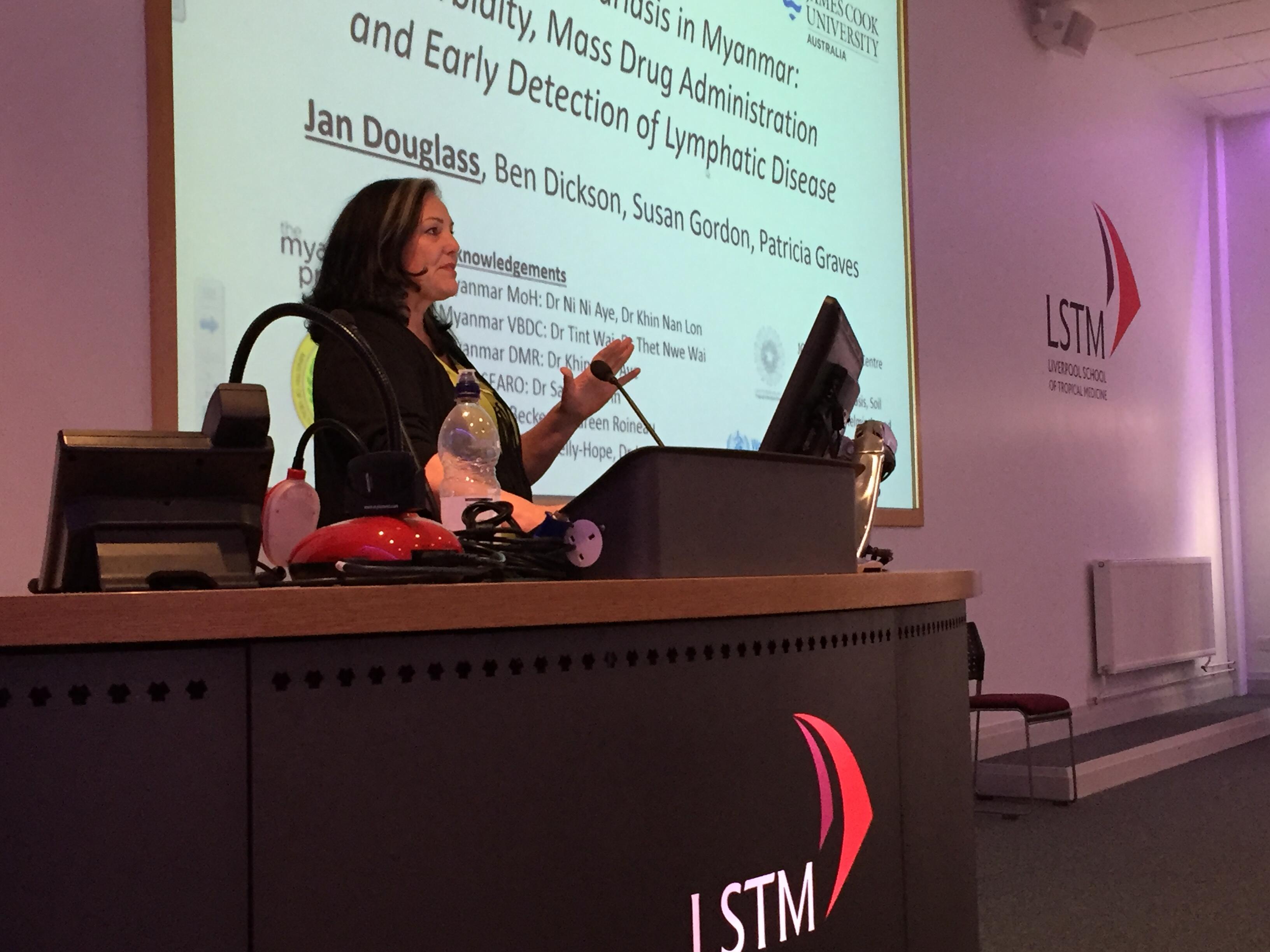
LSTM’s Seminar Series continued this week with a seminar by Jan Douglass, lymphatic therapist, instructor and doctoral candidate at James Cook University. Her talk entitled: Lymphatic Filariasis in Myanmar - Morbidity, MDA & early detection of lymphatic disease was delivered to staff and students, and was introduced by Dr Joseph Turner, Senior Lecturer in Parasitology.
She began by reflecting on the morbidity caused by secondary lymphoedemas and the diseases it is associated with, which include breast and abdominal cancers as well as the neglected tropical disease (NTD) lymphatic filariasis (LF), and highlighted the burden of hydrocoele, a swelling of the scrotum in men suffering from lymphatic filariasis. The lifetime management of lymphoedema and hydrocoele is necessary, having significant impact on the quality of life of sufferers. Often not identified until the latter stages of disease due to the associated stigma and superstition within the community, sufferers present to health care services with developed problems.
Jan Douglass illustrated the early interventions that could reduce the risk of severe lymphoedema development such as deep breathing exercises to reduce limb volume, which can be easily implemented in resource-poor settings. However, she highlighted the need to understand the development of lymphoedema in the lower limbs of young people, given that there are no early stage guidelines from the World Health Organisation for the management of LF in adolescents.
Consequently, Jan Douglass and colleagues have compared methods to identify subclinical lower limb changes in adolescents for the early stage detection. She described the systematic review and meta-analysis of LF prevalence and disease burden in mainland south East Asia, and that LF is still highly endemic in Myanmar despite an elimination programme commencing in 2001. With colleagues she performed morbidity surveys on 1014 participants in over 400 households in Myanmar to study these knowledge gaps, in particular the risk factors for LF infection and for the non-participation in mass drug administration programmes in the Mandalay region. They compared various detection strategies for the early identification of lymphoedema including tonometry, bioimpedance spectroscopy and the use of the skin fibrometer in adolescent participants, finding that anatomical location, limb dominance and gender had an impact on the measurements taken.
She concluded by highlighting the importance of lifetime morbidity management in the treatment of lymphoedema in LF, and that research will influence the development of guidelines for WHO for the detection and management of the early stage of LF.
A recording of the seminar can be found here: